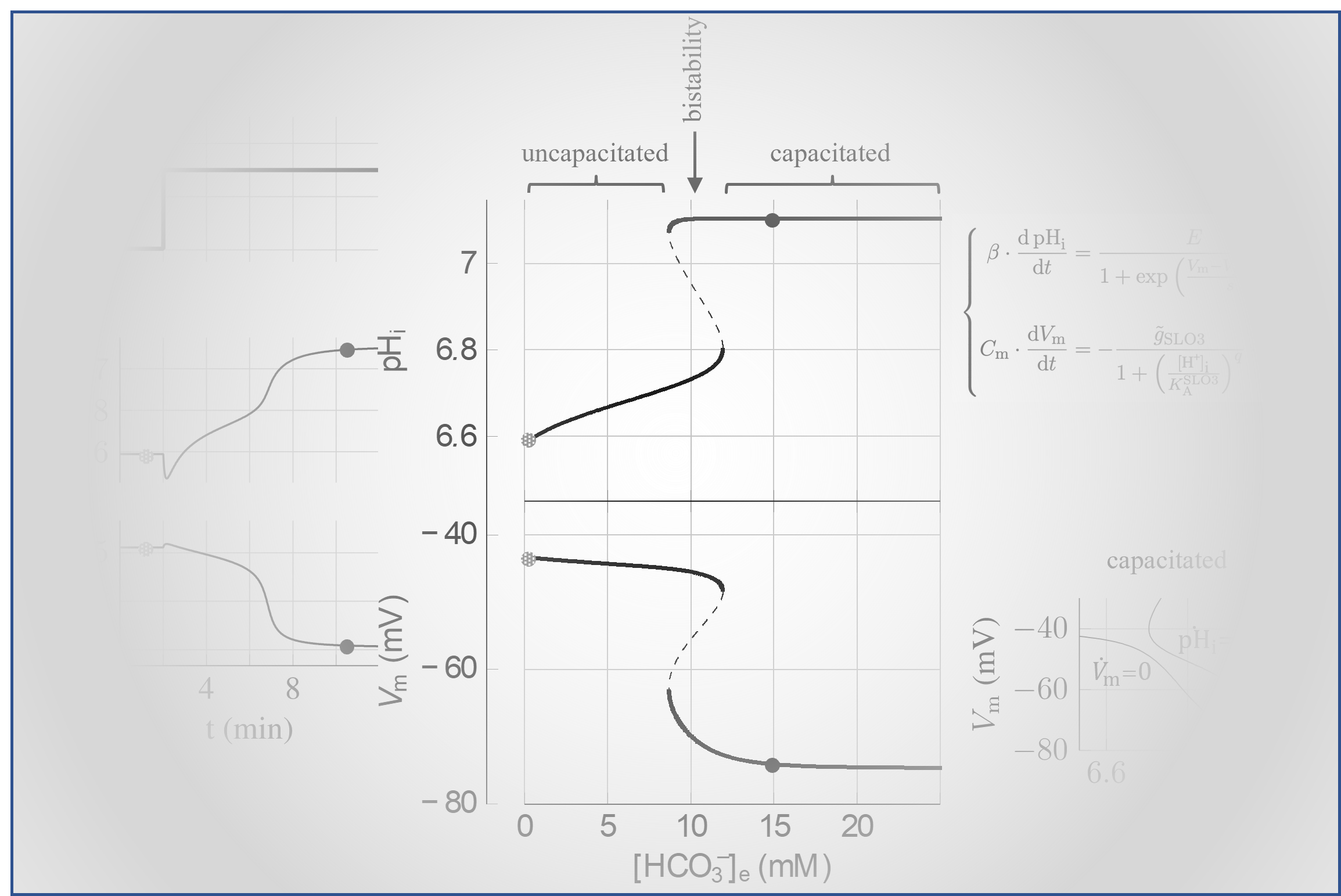In the same section
- Female Fertility Projects
-
Male Fertility Projects
- 1 The role of ion channels in spermatogenesis and the sperm capacitation process.
- 2.Mathematical modelling and experimental study of the sperm capacitation process
- 3.Impact of capacitation failure in human sperm and the identification of capacitation biomarkers in male infertility.
- 4.Pharmacological protection against chemotherapy damage
- Scientific Activities
- Médecine
- Human Reproduction
- EN
- Activities
- Male fertility
- male project 2
Mathematical modelling and experimental study of the sperm capacitation process
- Sperm maturation and male fertility

In order for mammalian spermatozoa to fertilize the ovocyte, they need a prolonged exposure to the alkaline medium of the female genital tract that results in structural and biochemical changes of the sperm cell.
Among these changes are the sperm’s hyperpolarization, the increase in intracellular pH, and finally the increase in intracellular calcium’s concentration : this process is called Capacitation.
Any alteration in one of these modification will impact the capacitation process and prevent a successful fertilization of the oocyte.
The discovery of various sperm-specific proteins, notably the calcium channel Catsper, the potassium channel Slo3, and the proton-sodium’s exchanger sNHE, opened new avenues for the development of male infertility treatments and non-hormonal male contraceptives.
In this regard, we are studying the roles of the transmembrane ionic fluxes during capacitation in the perspective to optimize either the preparation of sperm in assisted reproductive techniques, or the development of non-hormonal male contraceptives.
We develop a theoretical model formalizing the interactions between these key proteins to study the underlying dynamics of the capacitation process and in particular the rise of bistability in this molecular system. This will allow us to identify the relevant parameters controlling the threshold for sperm capacitation and therefore open the possibility of its pharmacological manipulation.

The aim of this project is to decipher the different ionic changes impacting sperm during in vitro capacitation, to evaluate how these changes are interconnected and how they influence the sperm’s ability to fertilize the egg. This will be achieved by using a combination of mathematical modeling and imaging techniques. More precisely, the specific aims for this project are:
- To establish the core molecular mechanism underlying the transition between the uncapacitated and capacitated state in mouse sperm and study its dynamics
- To identify pharmacological targets regulating this process
- To extend these findings to human sperm
This question has important translational implications for as it may provide a way to improve human male fertility treatments and pave the way to the development of non-hormonal male contraception.
